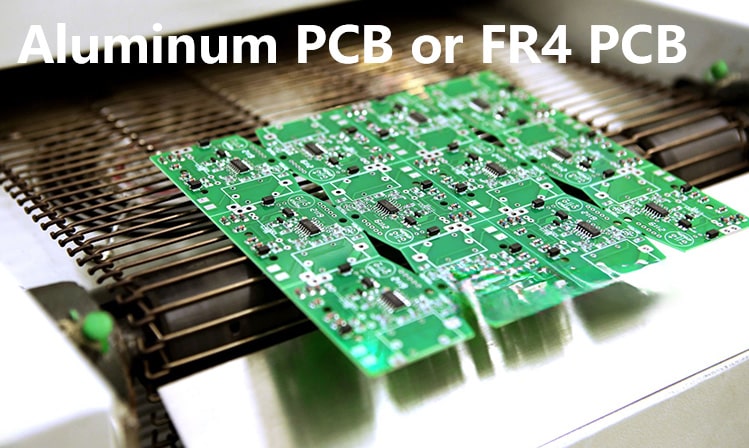Difference between aluminum substrate and FR4 board
Aluminum substrate and FR4 board are two common printed circuit board (PCB) materials, which have significant differences in performance, application and cost.
The following are their main differences:
Material composition
Aluminum substrate
Core material: The core of aluminum substrate is aluminum substrate, which is usually composed of three layers: copper foil, thermal insulation layer and metal aluminum base.
FR4 board
Core material: FR4 is a substrate composed of glass fiber cloth and epoxy resin. The "FR" in FR4 stands for "Flame Retardant" and the "4" indicates a specific epoxy resin.
Thermal conductivity
Aluminum substrate
Excellent thermal conductivity, suitable for electronic devices with high power and high heat dissipation requirements.
FR4 board
Poor thermal conductivity, usually used in ordinary electronic devices, where heat dissipation requirements are not high.

Mechanical properties
Aluminum substrate
Has good mechanical strength and rigidity, suitable for harsh environments and occasions with high mechanical stress.
FR4 board
Mechanical strength and rigidity are relatively low, but sufficient for most common applications.
Electrical performance
Aluminum substrate
General electrical performance, but performs well in high-frequency applications.
FR4 board
Excellent electrical performance, widely used in various electronic devices, especially high-frequency circuits.
Application fields
Aluminum substrate
Mainly used in fields that require efficient heat dissipation, such as LED lighting, automotive electronics, power supply equipment, etc.
FR4 board
Widely used in consumer electronics, communication equipment, computers, industrial control and other fields.
Cost
Aluminum substrate
Relatively high cost, suitable for high-end or special demand applications.
FR4 board
Low cost, suitable for ordinary electronic devices produced in large quantities.
Manufacturing process
Aluminum substrate
The manufacturing process is relatively complex, and factors such as thermal conductivity and electrical isolation need to be considered.
FR4 board
The manufacturing process is relatively simple, the process is mature, and it is suitable for large-scale production.
Aluminum substrate and FR4 board have significant differences in material composition, thermal conductivity, mechanical properties, electrical properties, application fields and cost. Which material to choose depends on the specific application requirements, such as whether efficient heat dissipation is required, mechanical strength requirements and cost budget.







